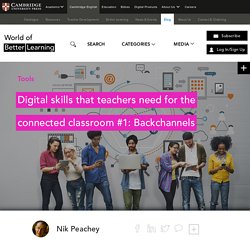

Lexxing. Un réseau social pour apprendre les langues. Lexxing c’est une sorte de Facebook Like, un Facebook de l’apprentissage des langues.

Il offre la possibilité de rencontrer et d’échanger avec d’autres personnes qui souhaitent elles aussi améliorer leur pratique et leur niveau dans une langue étrangère. L’interface proposée par Lexxing ne désorientera pas les habitués des réseaux sociaux. Ce veritable réseau social pour apprendre les langues est trés complet et propose tous les outils nécéssaires pour permettre à ses membres de publier, communiquer et échanger entre eux (forum, chat, album photo, video et blogues). Après votre inscription, vous allez pouvoir créer votre profil en indiquant votre langue et votre localisation. Vous pourrez aussi indiquer les lieux où vous êtes allé. Les échanges sur ce réseau social pour apprendre les langues vont essentiellement se faire autour de quatre univers partagés : les blogs, les albums photos, les vidéos et les forums.
Vous pouvez essayer Lexxing, réseau social pour apprendre les langues ici. Free virtual language exchange site using Skype by Dickinson College. Duolingo: Learn Languages Free. Learn a new language with the world’s most-downloaded education app!

Duolingo is the fun, free app for learning 35+ languages through quick, bite-sized lessons. Practice speaking, reading, listening, and writing to build your vocabulary and grammar skills. Designed by language experts and loved by hundreds of millions of learners worldwide, Duolingo helps you prepare for real conversations in Spanish, French, Chinese, Italian, German, English, and more. Engagement online: adult learner speaking tasks. Published 14 December 2020 Speaking is the skill most valued by adult and young adult students, as well as teachers.

After all, no one asks you which language you read, listen to, or write – the focus is very much on speaking. We know from research that immersive speaking tasks are motivating for learners – but how can we adapt these tasks for distance learning, where engagement is often harder to monitor? These days, teaching remotely isn’t an optional extra. 2020 plunged us straight into the online learning revolution – some of us kicking and screaming more than others! How to future-proof your English teaching career. Published 14 February 2020 Nick Robinson has worked in ELT publishing since 2004, as an author, marketer, trainer and conference speaker.

His particular area of content expertise is ESP. Digital skills that teachers need for the connected classroom #1: Backchannels. Published 26 July 2017 Nik Peachey, a Learning Technology Consultant, Writer and Teacher Trainer, begins his new ELT Technology series on digital teaching skills.

In this first post, he explores the benefits of using a backchannel in a face-to-face class. In the last twenty-five years since I started teaching, I have seen little real change in the nature of the ELT classroom. It’s true that whiteboards and blackboards have become digitised in many classrooms and now replace the role of tape recorders and video cassette decks, many course-books now have a range of digital materials that can be displayed on a data projector rather than an OHP, and many publishers now provide a range of interactive materials that students can use for homework. Despite all these things though, much of what they deliver is very similar to the materials I used when I first did my teaching certificate all those years ago.
What has changed however are the students. AI In English Language Learning. Published 9 March 2020 Raquel Ribeiro from Brazil is an English teacher, EdTech blogger, lecturer and contributing author for Evolve.

In this blog, Raquel explores the most practical ways English language teachers can use Artificial Intelligence in the ELT classroom. ‘The rapid expansion of technology and digital applications that characterizes the “4th Industrial Revolution” is changing the way we live, work – and learn. It’s a revolution driven by the fusion and amplification of emerging breakthroughs in artificial intelligence, automation and robotics, and multiplied by the far-reaching connectivity between billions of people with mobile devices that offer unprecedented access to data and knowledge.’ (Manns, 2017). The potential is massive, but when Artificial Intelligence is mentioned in educational contexts it can be quite intimidating.
Integrating AI to foster learner independence. Teaching with Tech #1: Developing Cognition. Published 11 January 2021 Technology is an integral part of our students’ lives, so how do we ensure that we are using it to teach effectively?

In this series, Delia Kidd will be looking at ways you can use technology in your teaching practices to achieve the Principles for Language Learning. The first article focuses on using technology to develop cognition and improve proficiency. Comment les enseignants utilisent le numérique. 5 Ways to Take Some of the Distance Out of Distance Learning in Middle and High School. Teachers understand the importance of physically being in the student space of the classroom.

It’s essential for engaging students who are off track, for making specific points, and for energizing already on-task learners. But how can we connect with students when we’re separated by either a computer screen or the physical barriers we currently need to keep everyone safe in the classroom? The following are five ideas we’ve tried this year with middle school and college students—they should also work with the high school students in between. 1.
Digital Materials To Facilitate Student Intake. Published 10 February 2021 Jade Blue describes some of the benefits of using digital learning materials, and suggests different ways you can use digital materials to help facilitate your learners’ language intake.

Digital materials are especially beneficial for supporting learners’ comprehension, focusing their attention, improving their noticing skills, engaging them with the content, and helping them to become more independent learners – all of which increase the potential for successful intake. Blended And Flipped Learning. Published 8 January 2021 What is blended learning?

A mix of face-to-face lessons with online study that is intended to add to what takes place in the classroom. The Cambridge dictionary suggests that blended learning is a way of breaking down barriers to education. Currently, a lot of teachers find themselves in blended learning situations as schools deal with country-specific pandemic requirements. La classe inversée en Langues Vivantes. Nurturing Creativity In Young Learners. Published 21 January 2021 To kick off our new podcast series, The Primary Pod, we speak to Paul Drury about developing the all-important creative thinking skills in young learners. Paul is an ELT author and Primary expert, and recently completed writing his latest Primary course, the Creative Journal, part of Cambridge Primary Path. We’ve experienced some rapid changes in the world in the last nine months. The pace and nature of these changes have highlighted the need for developing our learners’ life competencies, flexibility and resilience.
For those of you who haven’t heard about The Primary Pod, it’s all about language teaching with young learners. Creativity and playfulness This first episode includes discussion of what creativity is and why it’s important. Paul also provides us with a framework for teachers on how to develop creativity in the classroom. Usage des TIC dans l’apprentissage des langues étrangères. 5 Effective Modeling Strategies for K-12 English Learners. Despite the huge shifts in pedagogical practice caused by the move to online learning, some tried-and-true strategies, such as modeling for English learners, remain crucial. Since teachers often can’t intervene in real time these days, effective modeling—in which the teacher’s expectations for student performance are made explicit through an example—is a lifeline for English learners because of the clarity they provide.
In our experience observing K–12 classrooms—including classrooms with only English learners as well as classrooms that contain a mix of ELs and fluent English speakers—modeling is consistently underutilized despite being an easy, high-leverage strategy. It’s helpful to remember that providing effective models saves time in the end, since it both provides clear examples of expectations for a given assignment and reduces the verbiage a teacher needs to explain a task. 5 Types of Effective Models Effective modeling can take many different forms. 1. 2. Classroom Management and the Flipped Class. Editor's Note:This post was co-authored by Aaron Sams, CEO of Sams Learning Designs, LLC and founding member of the Flipped Learning Network.
Let's face it. We teachers spend far too much time and energy trying to keep students quiet so that they can listen to us. We have taken countless courses and workshops on classroom management in our careers, and it seems that the underpinning goal of classroom management is for teachers to keep kids quiet so that they can learn.
Drawing to Learn Language. Published 22 July 2020 Jade Blue highlights the benefits of using drawing as a tool to learn English with some fantastic activities to get your students doodling. From safety instructions on a passenger flight to underground train maps, images create a shortcut in communicating information, and are automatically more engaging for the reader. But the act of drawing differs to just looking at someone else’s image. The time required to consider how to visually represent ideas and concepts results in more processing time. During which, we’re evaluating and thinking more critically about the subject. As we begin to draw, what we produce deepens our understanding of it.
Drawing to enhance memory In 2016 the department of psychology at the University of Waterloo carried out a study of drawing information as a strategy to enhance memory. Jeux sérieux en vrac pour enseigner l’anglais. Les articles de la collection « Jeux sérieux en vrac pour » proposent des ressources vidéoludiques accompagnées de pistes pédagogiques qui n’ont pas été testées ni évaluées : vos commentaires sur la valeur de la ressource ou sur son usage sont donc les bienvenus. Le jeu vidéo peut être utilisé pour pratiquer plusieurs activités langagières. Il peut servir à la compréhension orale, à la compréhension écrite mais aussi à la restitution orale voire même à la restitution écrite mais seulement dans une minorité de jeux.
12 jeux à utiliser en classe pour développer son apprentissage des langues étrangères. Après avoir posé les bases théoriques de la pratique ludique pour développer l’apprentissage des langues étrangères en classe, voici une liste de jeux que j’utilise souvent en classe et que je peux conseiller. Spaceteam Basics - Spaceteam ESL. English n'games. Introducing 'School' Q1: What activity can’t parents get kids to sit still for? Q2: What activity can’t parents get kids to stop doing? A1: Online school. A2: Video games.This juxtaposition is particularly powerful considering linguist James Gee’s observation that video games are, at their core, instruments of learning.
Furthermore, he points out that they encapsulate complexity as a feature. That is, people play video games because of, not in spite of, the difficulty involved for them to win. Teachers and software developers are already jumping to develop gamified learning tools for the classroom, which is a good start. Unlike brick-and-mortar schools, which need to be built for each neighborhood, School game-level infrastructure would only need to be built one time. Quizlet. Créer des flashcards, quiz et jeux en ligne - Les Outils Tice. 5 Free Video Games That Support ELLs.
The concept of gamifying learning has been part of practical instruction, in various forms, for years, and for good reason: Research shows that game-based learning has the capacity to motivate students, activate knowledge, and enhance critical thinking capacities. This is just as true for English language learners (ELLs) as for native English speakers. Serious simulation games—which I have described as being “designed for the fundamental purposes of education for reaching a solution for real-world dilemmas”—can be especially effective in engaging middle- and upper-grade ELLs in rigorous content application. By inviting players to actively solve relevant problems, these games work to expand the ways in which learners see and interact with the world around them. For ELLs in particular, serious simulation games present an opportunity to demonstrate both existing funds of knowledge and fresh academic learning in ways that reduce the demand for expressive language. 1.
Playerthree 2. Film English – by Kieran Donaghy. 100 Great Game Based Learning and Gamification Resources. Serious Games pour l’éducation : utiliser, créer, faire créer ? 1Les Serious Games sont des jeux vidéo destinés à des usages autres que le divertissement, et notamment pour la formation. Serious games examples that explain all you need to know. At first sight, putting words like “serious” and “game” together might seem impossible, but it’s not. In recent years, serious games have proven that it is possible to learn while you play. This teaching method is known as game-based learning, a trend that’s expanding at the speed of light in primary schools, prestigious universities and large corporations.
La gamification, un outil marketing attrayant qui boost votre ludification ! Quizlet For Teaching Vocabulary. 'Twitter Wars' Breathe Life into Challenging Material. Using TV As A Medium For Learning. 5 Socially Distanced Activities for the Classroom. A Voice for English Teachers in Africa. Harry Kuchah Kuchah - How to nurture independent learners through pedagogic partnerships. Comment les enfants entrent dans la langue. Duolingo Releases Global Language Report. Un plan d'actions pour une meilleure maîtrise des langues vivantes étrangères. State Dept. Promotes Critical Language Learning.